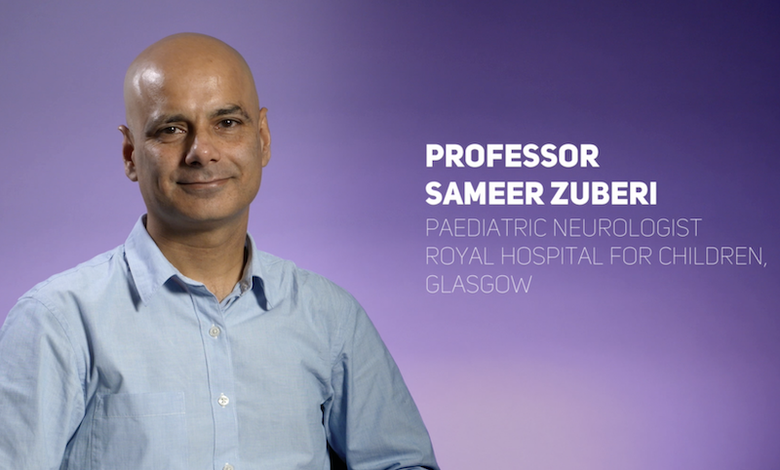SCN1A and Dravet Syndrome
More than 85% of children and adults diagnosed with Dravet Syndrome have a mutation in a gene known as SCN1A.
The SCN1A gene (short for sodium channel alpha 1 subunit) contains instructions (or code) for the creation of an important type of protein in the brain, known as a sodium ion channel. The movement of sodium ions in and out of nerve cells helps to control electrical messages in the brain.
Each person has two copies of the SCN1A gene: one from each parent. Many mutations found in Dravet Syndrome prevent one of these two copies from working as it should, leaving only one functional copy.
If one of the SCN1A copies is not functioning, one consequence may be that not enough ion channel protein is being made. If there is not enough of the ion channel protein, it cannot fulfil its task. The resulting faulty ion channel may cause the person with the SCN1A mutation to experience seizures and a variety of other conditions.
Fast facts about SCN1A and Dravet Syndrome
- 90% of SCN1A mutations are de novo, meaning they are not inherited from parents but appear spontaneously in the genetic make-up of the child/adult with Dravet Syndrome.
- There are over 6,000 places for a mutation to occur on the SCN1A gene.
- As SCN1A mutations can occur in so many different places of the gene, one child/adult with Dravet Syndrome is unlikely to have exactly the same mutation as another child/adult. It is partly for this reason that Dravet Syndrome is a spectrum condition, affecting each individual differently.
- Any type of SCN1A mutation can be seen in Dravet Syndrome and the mutation type does not predict the severity of the disease.
- Other SCN1A mutations are associated with less severe forms of epilepsy, such as Genetic Epilepsy with Febrile Seizures + (sometimes described as GEFS+).
- Around 10-15% of individuals with a clinical diagnosis of Dravet Syndrome have no detected SCN1A mutation. It may be that the mutation exists in these individuals, but scientists are not able to identify it yet. Or it may be that there are modifying factors other than the genetic mutation at play.
- Mutations in a number of genes other than SCN1A may also be implicated in a clinical diagnosis of Dravet Syndrome. Find out about these genes here.
- A genetic test is helpful to clarify or confirm a clinical diagnosis of Dravet Syndrome. It is a simple blood test that can be provided free of charge via the NHS in the UK. Find out more about testing here.
Connecting genetic knowledge with clinical care
Researchers are currently learning a great deal more about the role SCN1A mutations play in Dravet Syndrome and related epilepsies. At DSUK, we are privileged to have two of the neurologists at the forefront SCN1A research as members of our Medical Advisory Board - Professor Sameer Zuberi and Professor Andreas Brunklaus, both based at the Royal Hospital for Children in Glasgow.
Professors Zuberi and Brunklaus are involved in scientific research about the genetics of the sodium ion channel and epilepsy-related conditions such as Dravet Syndrome. They also see patients with these conditions as part of their daily clinical work at the Royal Hospital for Children in Glasgow.
In the video below, Professor Zuberi talks about the clinical benefits of SCN1A testing and how our increasing knowledge about SCN1A is improving the lives of people with Dravet Syndrome, both now and in the future.
Many thanks to our Medical Advisory Board member, Andreas Brunklaus, for his assistance in co-authoring this section of the DSUK website.
